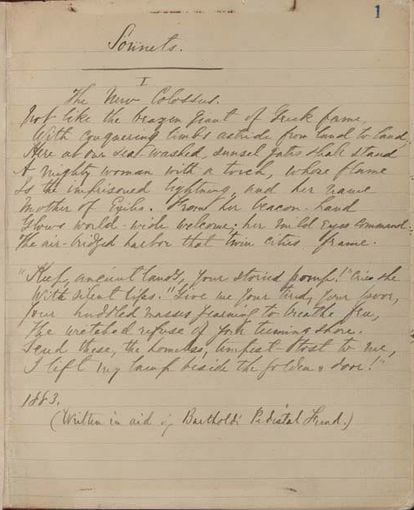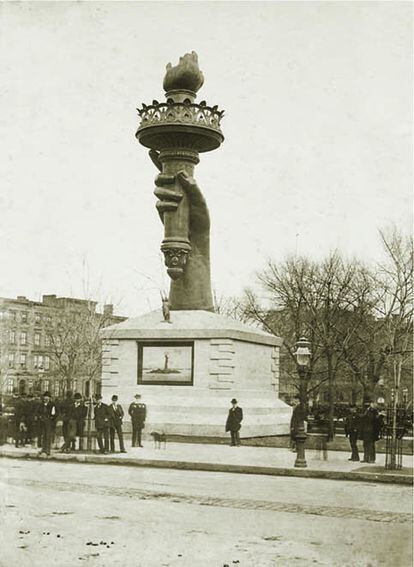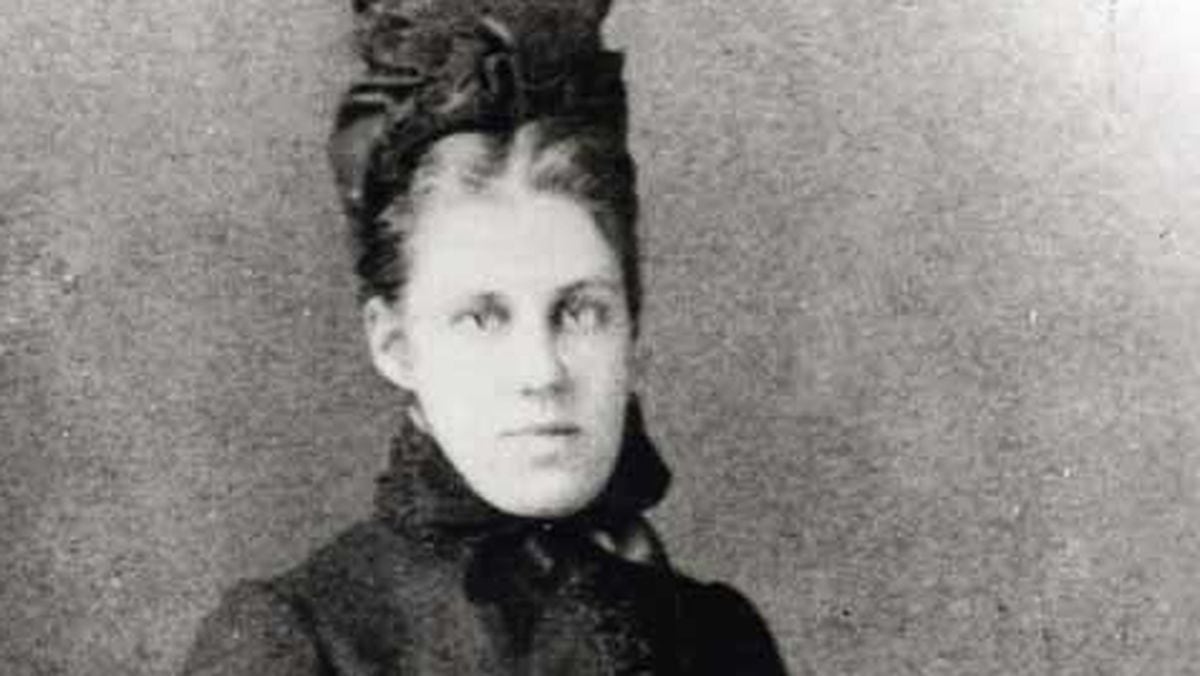“Keep, ancient lands, your legendary pomp!” she’s crying
With silent lips. “Give me your tired, your poor,
Your huddled masses yearn to breathe freely,
The wretched scum of your teeming shore.
These words could relate to all who have been uprooted by all the conflicts of the past, present and future. People who have been forced to leave their home country in search of a better life. These verses from “The New Colossus” are inscribed on the pedestal of the Statue of Liberty in New York Harbor, a welcome message for those who came to a country forged by immigration more than a century ago. century. The sonnet that wasn’t written by a founding father, famous writer, or pivotal late 19th century figure. Its author was a Jewish woman, a feminist from a family with Sephardic roots (Jews whose lineage goes back to the Iberian Peninsula). Now his work has been published for the first time in Spanish, in a book that presents a selection of his poems and articles, as well as a brief biography.
Emma Lazarus with los tartes de la libertad (Where Emma Lazarus at the Feet of Liberty), was written by Esther Bendahan and Israel Doncel, and published by Editorial Huso. It features translations of Lawrence Schimel’s original English texts and emphasizes Lazarus’ social awareness and activism. She was born in 1849 into one of New York’s elite families, descended from the first 23 Jews who arrived in the Dutch colony of New Amsterdam in 1654, the colony that would later become New York.
Lazarus and his six siblings all had private tutors, and Emma quickly showed a knack for languages. She learned French, Italian and German, then translated the verses of the German poet Heinrich Heine. She also translated the writings of medieval Jewish philosophers into contemporary English, including works by Maimonides. Bendahan, who is the director of culture at Madrid’s Centro Sefarad-Israel, an organization dedicated to preserving the legacy of Sephardic culture, describes Lazarus as someone “who is part of Spanish history and an ancestor of contemporary Sephardic literature, even if she wrote in another language and another place. As an example, Bendahan cites the poem of Lazarus, The exodus (August 3, 1942), regarding the expulsion of the Jews from the Iberian Peninsula by the Catholic Monarchs:
“The Spanish noon is a blaze of azure fire, and dusty pilgrims crawl like an endless snake along treeless plains… They leave behind them the grape, the olive and the fig tree… the garden cities of Andalusia and Aragon…”

Lazare was a precocious writer and published his first book, Poems and translations (1866), at the age of 17. It was rented in a New York Times reviewed as “remarkable”, mostly because it had been written by such a young woman in the three years before it was published. In 1874, Lazrus published his only novel, Alide: an episode in the life of Goethe. Two years later, she tried her hand at playwriting and published The Spagnolet.
In 1882, Lazare contributed an article to The century, one of the most widely circulated magazines in the United States at the time. However, in that same issue, there was an anti-Semitic article by a Russian journalist, who called Jews “disgusting parasites”. Lazarus was so outraged that “from that moment on, she decided never to hide her Jewish identity,” said Israel Doncel, director of communications at Centro Sefarad-Israel. Later that year she published a collection of poems, Songs of a Semite.
Doncel describes the poems in Songs of a Semite as “very intellectual and dense, almost like essays”, with themes like discrimination and persecution of Jews in Europe. “Religious intolerance and racial antipathy give rise to equally bitter and dangerous social hostility,” she wrote. Lazare often struggled with his editors. “I can’t do things on a mission. I am a poet, not a journalist,” she once said at a time when much of the press was obediently responding to political and economic interests.

Her commitment to the Jewish people was intensified when she saw the deplorable conditions and treatment of Russian immigrants. She wrote about homes without running water and the lack of schools for their children. Bendahan and Doncel say Lazarus was a pioneering Zionist, years before journalist Theodor Herzl wrote The Jewish State (1896), considered one of the most important texts of modern Zionism. Lazarus had long called for an independent Jewish state.
Little is known about his private life. “We don’t know of any of his love stories or relationships…His poetry is not romantic; it’s more in the vein of Mother Teresa’s social conscience,” Bendahan said. Single without children, Lazare traveled to the United Kingdom and France in 1883, the year she wrote “The New Colossus” to help Joseph Pulitzer raise funds for the construction of a pedestal for the Statue of Liberty, a gift from France. Lazarus composed the sonnet as a message of welcome to Jewish immigrants entering New York Harbor. Bendahan points to the poem’s verse about: “A mighty woman with a torch, whose flame is imprisoned lightning, and her name Mother of the exiles”, and how Lazarus compares her to Europe, a land that expels her people: “Not like the cheeky giant of Greek fame, with conquering limbs astride from land to land.
When the pedestal was finally completed and the Statue of Liberty was unveiled in October 1886, the verses composed by Emma Lazarus three years earlier were all but forgotten. She was traveling in Europe at the time and was forced to return home early due to poor health. Lazarus, 38, died Nov. 19, 1887. “Nobody knows for sure, but it was most likely cancer,” said Doncel.

Emma Lazarus’ friend Georgina Schuyler, writer and descendant of Alexander Hamilton, led the campaign to “The new colossus added to the pedestal of the statue. On May 6, 1903, the plaque with his now famous poem was unveiled. “While the unveiling of the statue was a highly publicized event, The New York Times only gave the plate a few lines the next day. Her voice was muffled because she was a woman and a Jew,” said Doncel, who hopes the book he wrote with Bendahan will give Lazarus his due in Spain.

